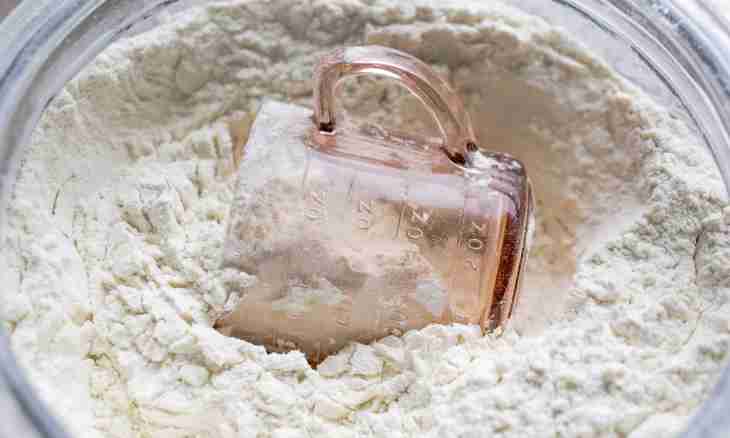Many hostesses periodically come up against a situation when they do everything in accuracy according to the recipe, and pastries are impossible. Dough is too dense or too liquid therefore the product isn't baked thoroughly and from an oven goes straight to a garbage can. The hostess is perplexed, she took so much flour how many it was required. The possible reason of failure can turn out the fact that the amount of flour in the recipe was incorrectly measured.
It is required to you
- - Flour
- - Measured tanks
- - Sieve
Instruction
1. Flour is a bulk stock which properties differ from a grade to a grade. And even the same grade made in different regions can have various humidity. For this reason the consistence of the test by which it is necessary to be guided when mixing ingredients is specified in recipes.
2. But, nevertheless, errors of measuring off of necessary amount of flour play a fatal role at production of pastries. The most frequent sizes met in recipes - grams, spoons, cups and glasses. Always attentively read all recipe before getting to work. For example, when sifting, flour considerably increases in volume therefore one glass packed and one glass of a sifted flour will weigh differently.
3. Tanks for flour have a certain volume. One cup contains 240 ml, 1 teaspoon – 5 ml, 1 tablespoon – 15 ml and 1 glass – 200 ml. If in the recipe flour is measured in cups, fill a cup with flour, but don't stamp it. Carry out by a knife on a cup to remove the flour hill. The hill always needs to be cleaned cups and glasses if in the recipe nothing is told on this subject separately.
4. 1 cup of wheat flour of the first of standard humidity contains in itself 140 гр. And will contain in 1 cup of a top-grade flour only 120 гр a product. The thick glass tumbler filled to an edge will comprise 120 and 110 гр torments respectively.
5. Measuring flour a spoon, scoop a product from a package and slightly knock on a spoon to shake big pikes. You have to have accurate small hill equal to about a volume of a spoon. As a result in a teaspoon you will have 8 grams of flour, in the dining room about 18-20 grams.
6. If you correctly measured flour, strictly followed a compounding, at you everything has to turn out, and you will be able to put with pride fresh pastries on a dining table.

